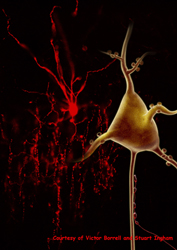Understanding schizophrenia
Thought to be a consequence of abnormal brain development, many studies indicate that schizophrenia has a strong genetic component, although the actual factors at play are still not well understood. Recent studies have turned to neuronal activity for greater insight into the causes of schizophrenia. Indications are that patients with this disorder experience significant brain signalling differences - the GABAergic neurotransmission – when compared to people who do not suffer from it. More specifically, genetic studies suggest that Neuregulin-1 (Nrg1) and its receptor ErbB4 are susceptibility genes linked to schizophrenia. The European-funded Gabacort project set out to determine the role of Nrg1/ErbB4 signalling in the mouse model. Preliminary observations show ErbB4 to be specifically expressed by GABAergic interneurons in brain development after birth. Data strongly suggest that impairment in Nrg1/ErbB4 signalling plays a key role in the molecular mechanism underlying the development of this psychiatric illness. Experiments show that when mice lost ErbB4 function, there was a decrease in the number of synapses made by chandelier cells - so called for their specific shape. These cells are noteworthy pathological features of patients with schizophrenia. Research has also been done on the activity of neurons and their implication in cognitive gaps in schizophrenia. Evidence gathered by the Gabacort team suggests that Nrg1-ErbB4 are interesting target molecules for potential therapies. The project has delivered a concrete model for future studies, which should enable the delivery of new drugs for this mental disorder. Project partners are confident that future projects will generate patentable results and also establish strong ties with industry.

